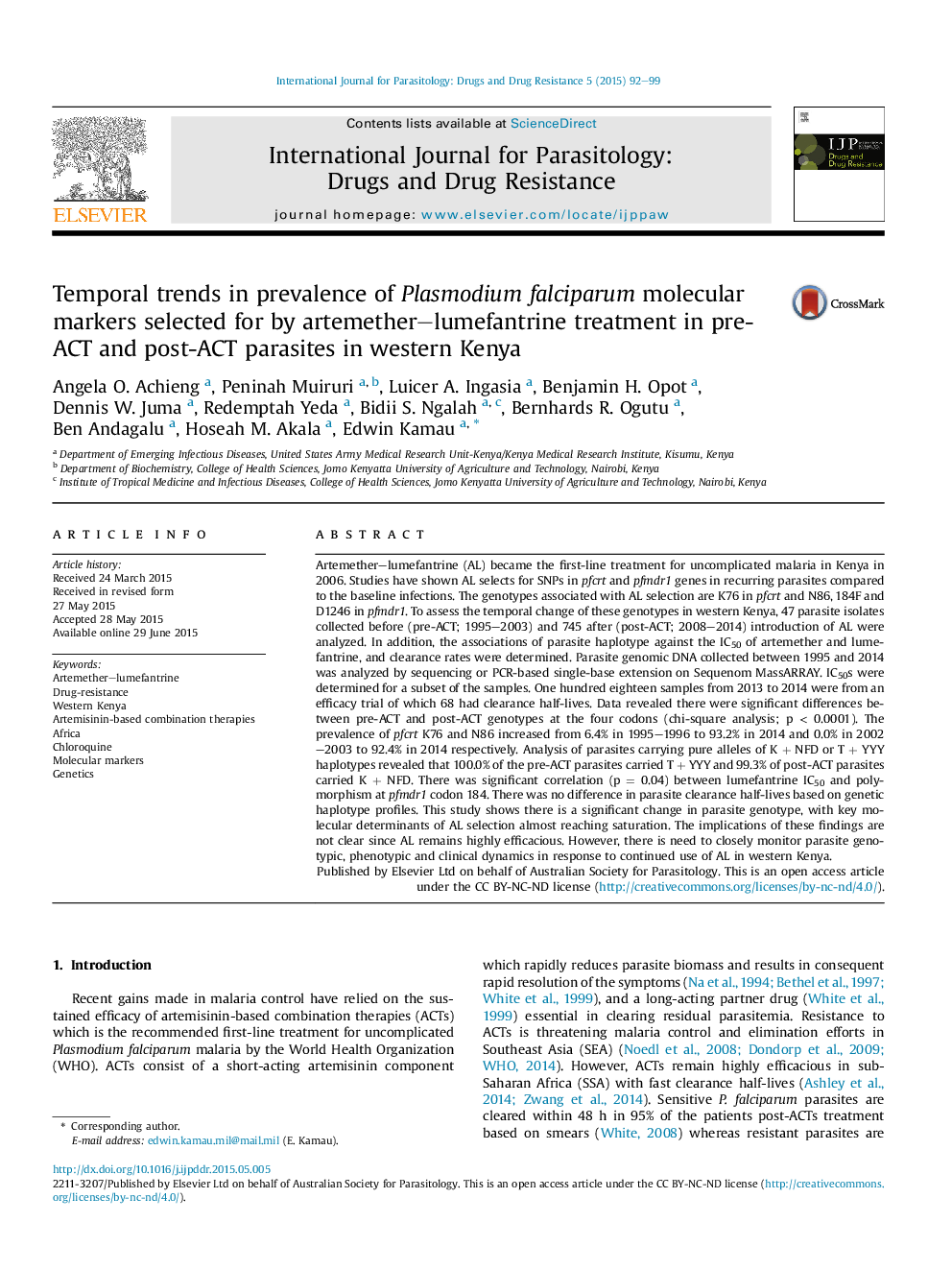| کد مقاله | کد نشریه | سال انتشار | مقاله انگلیسی | نسخه تمام متن |
|---|---|---|---|---|
| 2054747 | 1075693 | 2015 | 8 صفحه PDF | دانلود رایگان |

• The prevalence of pfcrt K76 increased from 6.4% in 1995 to 93.2% in 2014 and pfmdr1 N86 from 0% in 2002 to 92.4% in 2014.
• 100% of pre-ACTs parasites carried T+YYY haplotype whereas 99.3% post-ACTs parasites carried K+NFD haplotype.
• There is resurgence of chloroquine sensitive parasite in western Kenya.
• AL is still highly efficacious but there are drastic genetic changes taking place in the parasite population.
Artemether–lumefantrine (AL) became the first-line treatment for uncomplicated malaria in Kenya in 2006. Studies have shown AL selects for SNPs in pfcrt and pfmdr1 genes in recurring parasites compared to the baseline infections. The genotypes associated with AL selection are K76 in pfcrt and N86, 184F and D1246 in pfmdr1. To assess the temporal change of these genotypes in western Kenya, 47 parasite isolates collected before (pre-ACT; 1995–2003) and 745 after (post-ACT; 2008–2014) introduction of AL were analyzed. In addition, the associations of parasite haplotype against the IC50 of artemether and lumefantrine, and clearance rates were determined. Parasite genomic DNA collected between 1995 and 2014 was analyzed by sequencing or PCR-based single-base extension on Sequenom MassARRAY. IC50s were determined for a subset of the samples. One hundred eighteen samples from 2013 to 2014 were from an efficacy trial of which 68 had clearance half-lives. Data revealed there were significant differences between pre-ACT and post-ACT genotypes at the four codons (chi-square analysis; p < 0.0001). The prevalence of pfcrt K76 and N86 increased from 6.4% in 1995–1996 to 93.2% in 2014 and 0.0% in 2002–2003 to 92.4% in 2014 respectively. Analysis of parasites carrying pure alleles of K + NFD or T + YYY haplotypes revealed that 100.0% of the pre-ACT parasites carried T + YYY and 99.3% of post-ACT parasites carried K + NFD. There was significant correlation (p = 0.04) between lumefantrine IC50 and polymorphism at pfmdr1 codon 184. There was no difference in parasite clearance half-lives based on genetic haplotype profiles. This study shows there is a significant change in parasite genotype, with key molecular determinants of AL selection almost reaching saturation. The implications of these findings are not clear since AL remains highly efficacious. However, there is need to closely monitor parasite genotypic, phenotypic and clinical dynamics in response to continued use of AL in western Kenya.
Figure optionsDownload as PowerPoint slide
Journal: International Journal for Parasitology: Drugs and Drug Resistance - Volume 5, Issue 3, December 2015, Pages 92–99